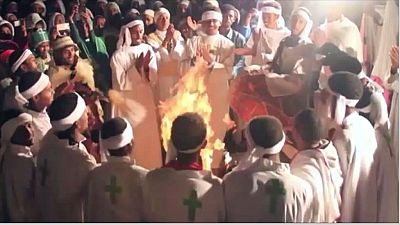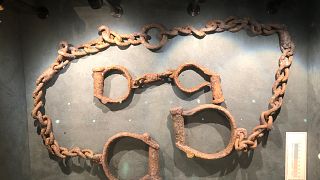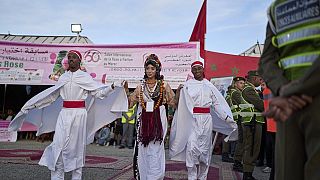Ethiopia
For weeks in August, Ethiopian boys dress up and perform songs from door to door in neighbourhoods across the country. In return, the boys get ‘Mulmul’ – bread freshly baked for the occasion in each house.
Known as Buhe, the festival – like most cultural celebrations here has its origins in the Ethiopian Orthodox Church. It marks the transfiguration of Jesus on Mount Tabor.
“I started participating in Buhe when I was 14. I get very excited when the time for Buhe comes around because it is the commemoration of Jesus appearing in a supernatural light. We celebrate Buhe with very interesting activities,” said Kirubel Sibhat, one of the young performers.
Buhe is also a tradition where young people are reminded to value older generations. The songs are written and performed in praise of adults and elders.
But over time, the tradition of Buhe has struggled to stay alive, especially in urban locations like Addis Ababa – a city undergoing its own transformation as the capital of one of Africa’s fastest growing economies.
Churches are trying to revive the celebration to its old glory. The boys can now also receive gifts of money in place of fresh bread – a sign of the times where people have less time to prepare for such festivals.
“The new generation has the responsibility of learning and continuing the traditions of its fathers, as we age. It has the responsibility of upholding national traditions instead of following foreign traditions,” Said Kassaye Gutema, an Addis Ababa resident.
The boys crack a whip made of braided tree fibers to signal their approach into a neighbourhood. Traditionally the whip was cracked by shepherd boys.
Buhe also marks the last days of the rainy season.
Religious leaders and Orthodox faithful take the time to give thanks and pray for a good harvest. They also take time to reflect on the biblical significance of the events.
According to Wosanyu Zewdie, a deacon and teacher at St. Yohannes school, Buhe is a culmination of tradition and religion.
“The meaning of the whip being cracked is to imitate the sound of the thunder that was heard in the sky. We later light a bonfire to represent the light that was illuminating when Christ appeared. The bread signifies the fact that mothers took bread to their shepherd boys who stayed out late because they thought it was still daylight, but it was Christ’s supernatural appearance. So all the cultural activities you see in relation to Buhe have their origin in religion,” he said.
After sunset, celebrations move to the streets where large bonfires burn well into the night and hundreds sing and dance in anticipation of the new year – marked in Ethiopia according to the Orthodox Calendar in September.
The Ethiopian Orthodox Church is one of the pre-colonial Christian denominations in sub-Saharan Africa and is estimated to have between 40 and 45 million followers. The overwhelming majority live in Ethiopia.














01:13
China and Ethiopia reaffirm alliance at meeting on sidelies of BRICS summit
Go to video
Paraguayan town celebrates vibrant Kamba Ra'anga festival with masks, fire and tradition
02:20
Alune Wade lights up Saint-Louis Jazz Festival
Go to video
Kenya set to surpass Ethiopia as East Africa’s largest economy in 2025 – IMF
Go to video
Grand funerals of the Bôbô: Honoring the dead and celebrating unity
Go to video
World Food Programme to halt aid for 650,000 women and children in Ethiopia